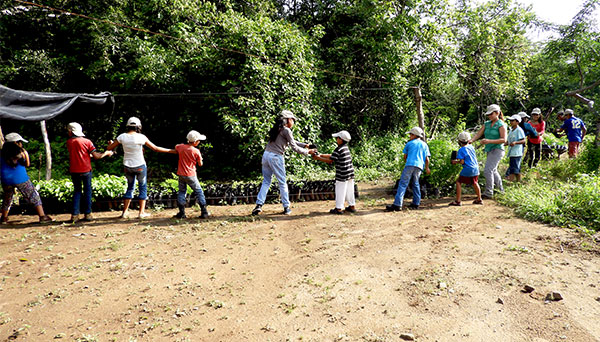Environmental Restoration Strategies to Increase Resilience in Rural Areas that are Extremely Marginalized, as well as Important for Biodiversity
Organization: Guacamayas Calentanas AC.
Mission: Wildlife conservation in the Bajo Balsas region of Michoacán, based on a socio-environmental approach that involves the participation of landowners.
Location: Municipality of Churumuco, in the Bajo Balsas region of Michoacán.
Country: Mexico
Other Organizations Involved: Ecological Restoration Research Laboratory, Faculty of Biology, Michoacán University, Okramfilms
 ©Guacamayas Calentanas AC.
©Guacamayas Calentanas AC.
Background
For 8 years, the applicant organization, whose members live in a highly marginalized community, worked with researchers from Michoacán University, initially on a project to protect and conserve the military macaw (Ara militaris), an endangered species. These project participants then took the initiative to diversify activities to encompass comprehensive land management, including such actions as reforestation of degraded areas with seedlings of native and/or threatened species of trees grown in a community plant nursery, the return to traditional maize and cultivation of beans without using fertilizers or agrochemicals, and organizing environmental education workshops for two years in the elementary schools of six local communities. Not only are these local inhabitants very clear on maintaining their conservation efforts and moderate use of their natural resources, they have also found it in their own interest to restore and maintain hydrological services in their region.
Goals
- Collect 80,000 seeds and produce 20,000 plants.
- Establish 3 linear km of hedges and construct 1 linear km of soil conservation works.
- Reforest 6 ha in priority areas of the badlands.
- Establish 20 production units, each with 25 hens and a 100 m2 vegetable garden.
- Produce and distribute 1,000 educational booklets on the traditional uses of the region’s plants.
- Produce an educational video with high quality audio and video production.
Main activities
- Collect and disseminate seeds important to villagers through the creation and operation of a community plant nursery to produce seedlings for the species to be used in each of the project’s target areas, based on the traditional ecological knowledge of the inhabitants of the Poturo micro-basin.
- Construct hedges and soil conservation works for priority croplands and pastures, as identified based on their gradient, degree of deterioration and proximity to waterways.
- Ecological restoration of strategic sites for forest cover and hydrological services recovery, such as volcanic rock recharge areas adjacent to springs and degraded areas near aquifers.
- Establish poultry farming and family vegetable garden projects for subsistence purposes.
- Linking of traditional knowledge of wild and cultivated plant resources to the diets and nutritional habits of local inhabitants via the elaboration and dissemination of an educational booklet on locally available useful plant species.
- Film interviews, project activities and landscapes for use in an educational video aimed at the general public.
Outcomes
- Community members will have duly collected germplasm for the species identified during the ecological restoration workshop.
- Community members will have duly implemented restoration actions to improve the conservation status of the project’s target plots of land.
- Community members will have duly reforested the deforested areas of rocky volcanic areas (badlands).
- 20 poultry farming and vegetable garden production units will be totally operational by the end of the project’s 1st year.
- Based on the information from a dissertation in progress, an outreach booklet will be written, on the uses of the region’s plant resources.
- A specialized video producer will make a video. The latter will be the project’s final education/outreach product.